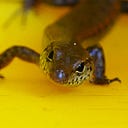Member-only story
It’s Cuckoo Time
All the birds are on high alert
Sumer is icumen in/ Lhude sing cuccu
[Summer is coming in/loud sings the cuckoo — 13th century English song]
A few days before the start of austral spring on 1 September, I heard the first cuckoo of the season. The cuckoo was a male Pacific Koel, a sleek, black-feathered bird with ruby eyes and an anxious rising call that carries a long way, especially at night. Koels are migratory, spending winter in New Guinea. They return to Australia in anticipation of warming weather and monsoon rains. Koels are also called Stormbirds; their calls proclaim the coming Wet Season.
The cuckoo singing in ‘Sumer is icumen in’ is another migratory species — the Common Cuckoo of Europe and Asia. Gentlemen naturalists assiduously recorded the arrival of the bird, a tradition later extended to the letters page of The Times.
William Marwick (1789) noted that cuckoos arrived in the South of England in late April and departed around the middle of September. (On 4 February 1913, naturalist Richard Lydekker wrote to the editor of The Times to comment on the astonishingly early arrival of the bird at Harpenden, north of London. A week later, he wrote another letter explaining that the call had come from a brickie’s labourer demonstrating how well he could mimic a cuckoo.)
